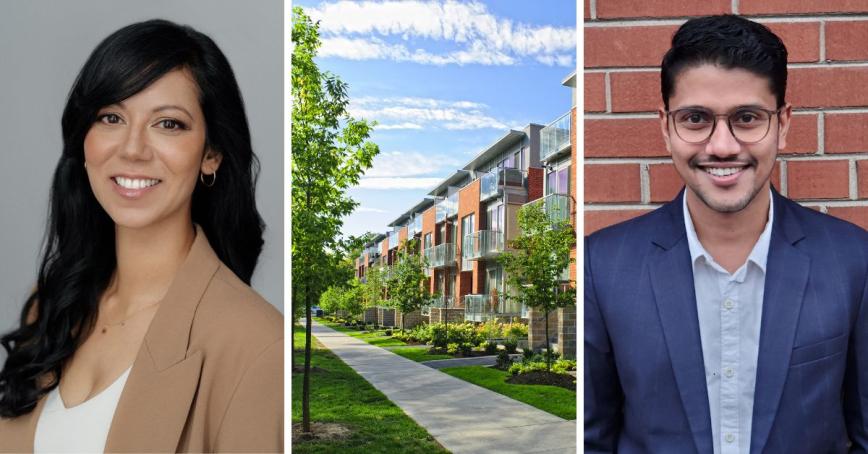RRU researchers “retrofitting” community housing standards
Topics
Featured
Share online

Learn more about research at Royal Roads, or if research like this interests you, check out the Master of Arts in Environment and Management program.
Governments, non-profits and co-operatives are increasingly investing in building new housing to keep up with Canada’s housing crisis.
While building more units is critical to meeting housing demand, a focus on energy efficiency in both new and existing housing is needed to lower operating costs, protect residents’ wellbeing and increase climate resilience, according to two Royal Roads University researchers.
Runa Das, an associate professor in the College of Interdisciplinary Studies, and Jofri Issac, a student in the Master of Arts in Environment and Management program, along with co-investigator Rob Newell, worked on a research project with Community Housing Canada funded by the Social Sciences and Humanities Research Council.
They studied community housing — also known as social and affordable housing — to learn about environmental and building performance, and the potential challenges of a transition to renewable energy systems, especially for existing structures.
Now that there’s a focus on improving these buildings, let’s do it in a sustainable way, in a way where we focus more on renewable energy sources. - Jofri Issac, MAEM student
Building construction and operations account for 17 per cent of total greenhouse gas emissions in Canada, Das explains. Inefficient energy and heating systems also contribute significantly to emissions, especially in the older buildings which make up most of the community housing in Canada. In addition, temperature regulation is often difficult in community housing due to poor ventilation and insulation, driving up operating costs.
“Now that there’s a focus on improving these buildings, let’s do it in a sustainable way, in a way where we focus more on renewable energy sources,” Issac says.
“We need to think about retrofitting,” says Das. “We need to think about how to reduce energy use.”
Das says residents of community housing often have “double or triple vulnerability” and they live in buildings that perform the worst in extreme heat or cold events.
Often, the decisions about renovating or replacing community housing are made from the top down, says Das. She believes decision-makers must speak with tenants about their concerns, especially if work on a building requires residents to relocate temporarily.
“We need to have the conversation among a lot of different groups,” she says. “This is what really stuck out with these interviews. This idea of relocation — the engineer might not be thinking about that aspect but it’s a really important practical aspect in the feasibility of the project.”